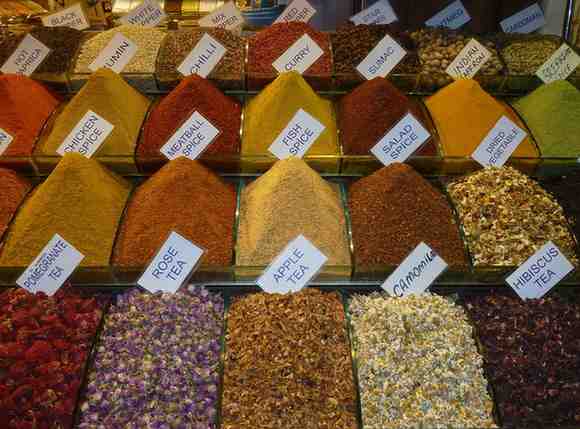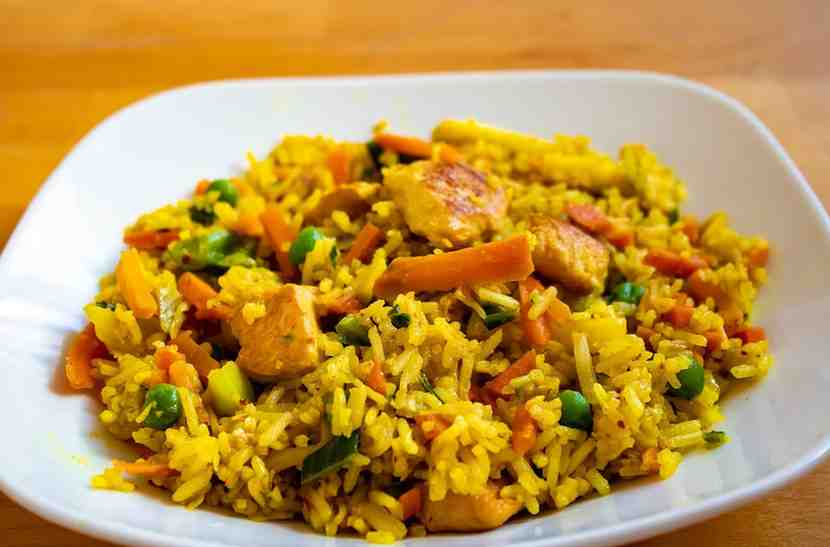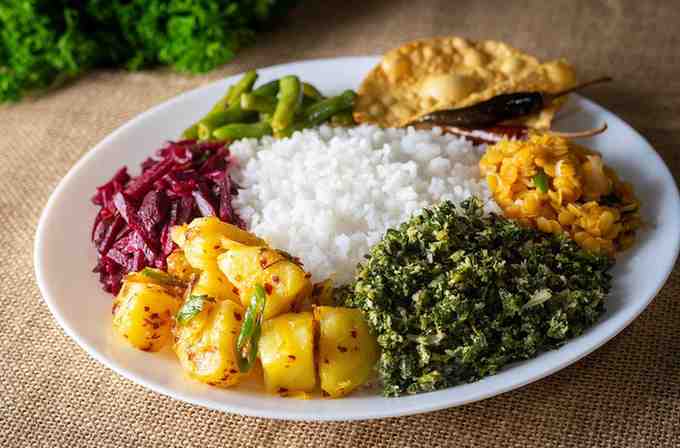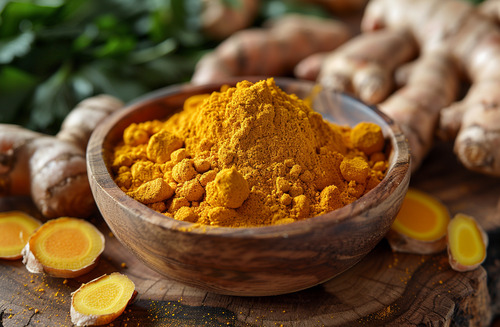Turmeric, a vibrant spice native to India and Southeast Asia, shares a close botanical relationship with ginger, both thriving in tropical climates. These roots flourish in regions with rich, loamy soils and ample rainfall. India, the largest producer of turmeric, also excels in ginger cultivation, particularly in states like Andhra Pradesh, Tamil Nadu, Karnataka, and Kerala.
Key Characteristics:
- Tropical climate
- Rich, loamy soil
- Ample rainfall
- Harvesting: January to March
- Processing: Boiling, drying, polishing
- Major Producers: India, Indonesia, China, Taiwan, Sri Lanka, Bangladesh, Pakistan, Peru, Caribbean

Historical Significance
For over 4,000 years, people in India have cultivated turmeric, a vibrant yellow spice with a distinctive earthy flavor. As a member of the ginger family, turmeric has gained renown for its medicinal properties, cultural importance, and culinary applications.
Key Points:
- Ancient Texts: The Atharva Veda, an ancient Indian text, highlights turmeric’s role in healing practices.
- Religious and Cultural Significance: Hindus use turmeric in ceremonies as a symbol of purification, protection, and fertility. It also plays a crucial role in auspicious rites and festivals.
- Global Trade: Turmeric spread beyond the Indian subcontinent through trade routes like the Silk Road. Arab traders introduced it to Europe, and Marco Polo observed its use in China.
- Medieval Europe: Known as “Indian saffron,” turmeric was used as a substitute for saffron and served as both a dye and a medicinal herb.
- Scientific Research: In the 18th and 19th centuries, scientists began extensive studies on turmeric. Curcumin, the active compound, was isolated in 1815, marking the start of modern scientific interest.
Active Components of Turmeric
Curcumin – The Key Compound
Curcumin, which constitutes about 2-8% of turmeric, is its most recognized and extensively studied bioactive component. This compound gives turmeric its vibrant yellow color and accounts for many of its health benefits.
Curcumin has strong anti-inflammatory properties. It actively inhibits molecules like cytokines and enzymes such as cyclooxygenase-2 (COX-2), which cause inflammation. This action makes curcumin beneficial in managing conditions like arthritis. Furthermore, curcumin acts as a powerful antioxidant, neutralizing free radicals and enhancing the body’s antioxidant enzymes, thereby reducing oxidative stress and preventing cellular damage.
Other Active Components
Turmeric contains various other bioactive compounds that contribute to its medicinal properties:
- Demethoxycurcumin and Bisdemethoxycurcumin: These curcuminoids also have anti-inflammatory and antioxidant properties, boosting turmeric’s therapeutic potential.
- Essential Oils: Turmeric’s essential oil includes compounds like turmerone, atlantone, and zingiberene, known for their anti-inflammatory, antimicrobial, and antifungal effects. Turmerone, in particular, shows promise for neuroprotective benefits, which may help conditions like Alzheimer’s disease.
- Proteins and Resins: These minor components enhance turmeric’s medicinal properties, contributing to its overall health benefits.
Together, these compounds create turmeric’s unique profile, making it a versatile addition to both dietary and therapeutic practices.

Ethnobotanical Uses of Turmeric
Cultural and Religious Significance
In South Asia, turmeric holds a revered position in various cultural and religious practices. Hindus, for instance, see turmeric as a symbol of purity, fertility, and prosperity. During weddings, the “Haldi ceremony” involves applying turmeric paste to the couple, a practice believed to bless them with good health and prosperity.
In southern India, people often string together turmeric rhizomes to hang over doorways or wear as amulets, thought to ward off evil spirits. Turmeric water is also used in purification rituals, especially in temples and during festivals like Diwali.
Traditional Medicine
Turmeric is a cornerstone in several traditional medicine systems, including Ayurveda, Siddha, and traditional Chinese medicine. These ancient practices have long recognized turmeric’s therapeutic potential and have used it to treat a wide array of ailments.
Key Uses:
- Digestive Health: Turmeric stimulates bile production, aiding digestion and relieving symptoms like bloating and gas. It is often used to treat dyspepsia and peptic ulcers.
- Skin Care: Turmeric’s anti-inflammatory and antimicrobial properties make it a popular remedy for skin issues. People commonly apply it topically to treat wounds, cuts, eczema, psoriasis, and acne.
- Respiratory Health: Turmeric helps manage asthma, bronchitis, and allergies. Its anti-inflammatory properties reduce airway inflammation, while its antimicrobial effects combat respiratory infections.
- Pain Relief: Traditionally, people have used turmeric to manage pain and inflammation, ranging from joint pain in arthritis to muscle soreness. It is often consumed as a paste or mixed with milk.
- Immune Support: Turmeric is believed to boost the immune system, helping protect against infections.
Modern scientific research increasingly supports these traditional uses, further validating and expanding our understanding of turmeric’s health benefits.
Culinary Uses of Turmeric
Spice in the Kitchen
Turmeric is an essential ingredient in many culinary traditions, particularly in Indian, Southeast Asian, and Middle Eastern cuisines. Its warm, earthy flavor and vibrant color make it a versatile addition to a variety of dishes.
Common Uses:
- Curries: Turmeric is a fundamental component of curry powders and pastes, providing a distinct flavor and yellow color to many curry dishes.
- Rice Dishes: Turmeric adds flavor and color to rice dishes like pulao and biryanis. Known as yellow rice, it is popular in many cultures.
- Soups and Stews: Turmeric brings depth and warmth to soups and stews, such as dal, a staple in Indian cuisine, and soto ayam, an Indonesian chicken soup.

Modern Culinary Applications
In recent years, turmeric has gained immense popularity in contemporary cuisine, especially for its health benefits and versatility.
Modern Uses:
- Golden Milk: This trendy beverage combines turmeric with milk, spices like cinnamon and ginger, and sweeteners such as honey or maple syrup. It is known for its anti-inflammatory and calming properties.
- Smoothies: Turmeric is a popular addition to smoothies, often blended with banana, mango, coconut milk, and ginger for a nutritious and flavorful boost.
- Health Foods: Turmeric appears in various health foods, including energy bars, granola, and even chocolates. Turmeric lattes and teas have become staples in cafes.
As chefs and home cooks continue to experiment, turmeric’s culinary uses evolve, making it an increasingly prominent ingredient in modern kitchens.

